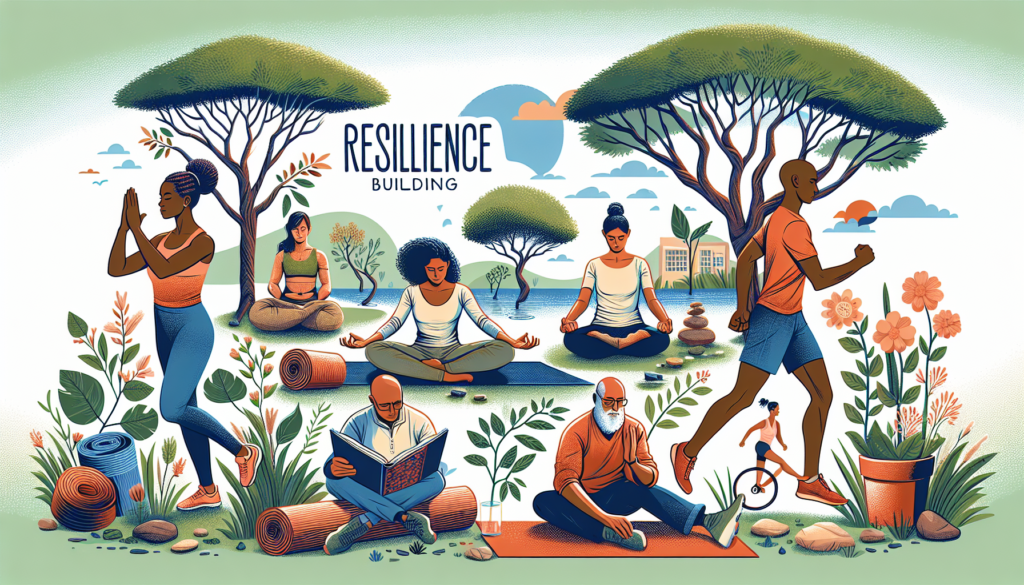Cultivating Compassion: A Comprehensive Guide to Understanding and Practicing Empathy
Compassion, often described as the ability to understand the emotional state of others and respond with kindness, is a fundamental aspect of human connection and societal harmony. It involves recognizing suffering, empathizing with those experiencing it, and taking action to alleviate pain or improve well-being. Cultivating compassion not only benefits those receiving kindness but also positively impacts the mental and emotional well-being of the individual expressing empathy.
In this article, we will explore the multifaceted nature of compassion, its significance in various contexts, and strategies to actively practice and enhance this noble trait. Through a combination of research, real-life examples, and expert insights, we will delve into the depths of compassion to uncover its transformative power and potential for creating a more empathetic world.
The Science of Compassion: Understanding the Neurobiology of Empathy
Research in neuroscience has shed light on the biological underpinnings of compassion, revealing that acts of kindness and empathy trigger the release of oxytocin, often referred to as the “love hormone.” Oxytocin promotes bonding, trust, and social connection, reinforcing the positive impact of compassionate behavior on relationships and overall well-being. Studies have shown that individuals who regularly engage in acts of compassion exhibit lower levels of stress, anxiety, and depression, highlighting the reciprocal benefits of giving and receiving empathy.
Moreover, neuroimaging studies have identified specific regions of the brain associated with empathy, such as the anterior cingulate cortex and insula, which are activated when individuals witness or engage in compassionate acts. These findings underscore the innate capacity for empathy within the human brain and the potential for cultivating compassion through intentional practice and empathy-building exercises.
The Evolution of Compassion: Tracing the Historical Roots of Empathy
Compassion has deep roots in human evolution, as evidenced by the altruistic behaviors observed in our primate ancestors and early human societies. The concept of empathy, or the ability to understand and share the feelings of others, played a crucial role in fostering cooperation, social cohesion, and moral development among early humans. From the teachings of ancient philosophers like Confucius and Buddha to the ethical principles of religious traditions such as Christianity and Islam, compassion has been revered as a guiding principle for ethical living and social harmony.
Throughout history, compassionate leaders and individuals have inspired movements of social change and justice, from the civil rights activism of Martin Luther King Jr. to the humanitarian efforts of Mother Teresa. These historical examples illustrate the transformative power of compassion in addressing systemic injustices, promoting equality, and fostering a more inclusive and compassionate society.
The Power of Compassion in Healthcare: Enhancing Patient Care and Well-Being
In the field of healthcare, compassion plays a vital role in improving patient outcomes, enhancing the quality of care, and fostering healing and recovery. Empathetic healthcare providers who demonstrate compassion and understanding towards their patients not only build trust and rapport but also contribute to a more positive and supportive healing environment. Research has shown that patients who feel cared for and understood by their healthcare providers experience reduced anxiety, pain, and stress, leading to better treatment adherence and overall well-being.
Moreover, compassionate care is associated with increased patient satisfaction, improved communication, and reduced burnout among healthcare professionals. By prioritizing empathy and compassion in healthcare settings, organizations can create a culture of kindness and empathy that benefits both patients and providers, ultimately leading to better health outcomes and a more compassionate healthcare system.
Cultivating Compassion in Education: Fostering Empathy and Social Emotional Learning
Empathy and compassion are essential skills that can be nurtured and developed from a young age through social emotional learning (SEL) programs in schools. By integrating empathy-building activities, mindfulness practices, and conflict resolution strategies into the curriculum, educators can help students cultivate compassion, kindness, and emotional intelligence. Research has shown that students who participate in SEL programs demonstrate higher levels of empathy, self-awareness, and relationship skills, leading to improved academic performance and social behavior.
Furthermore, teaching empathy and compassion in schools can help reduce bullying, enhance peer relationships, and create a more inclusive and supportive learning environment. By emphasizing the importance of compassion and understanding towards others, educators can empower students to become compassionate and socially responsible individuals who contribute positively to their communities and society at large.
Expert Opinions: Insights from Compassion Researchers and Practitioners
To gain further insights into the practice of cultivating compassion, we reached out to leading researchers and practitioners in the field of empathy and compassion. Dr. Karen Armstrong, a renowned author and religious scholar, emphasized the universal significance of compassion in promoting peace and understanding among diverse cultures and religions. She highlighted the importance of empathy as a unifying force that transcends differences and fosters a sense of shared humanity.
Dr. Tania Singer, a neuroscientist and empathy researcher, shared her insights on the neurobiological mechanisms underlying compassionate behavior and the potential for cultivating empathy through mindfulness practices and compassion training. She emphasized the transformative power of empathy in fostering social connections, reducing prejudice, and promoting prosocial behavior in individuals and communities.
FAQs: Common Questions About Cultivating Compassion
1. How can I cultivate compassion in my daily life?
Practicing mindfulness, active listening, and acts of kindness towards others are powerful ways to cultivate compassion in everyday interactions. Engaging in empathy-building exercises, volunteering, and seeking to understand the perspectives of others can also help enhance your capacity for compassion.
2. What are the benefits of cultivating compassion?
Cultivating compassion can lead to improved mental and emotional well-being, stronger relationships, reduced stress, and increased feelings of connection and empathy towards others. By prioritizing compassion in your interactions, you can create a more positive and supportive environment for yourself and those around you.
Conclusion: Embracing Compassion as a Pathway to a More Empathetic World
In conclusion, cultivating compassion is not only a noble pursuit but also a transformative practice that can enrich our lives, strengthen our relationships, and contribute to a more empathetic and compassionate world. By understanding the neurobiological, historical, and practical dimensions of empathy, we can strive to embody compassion in our daily interactions, promote social justice and equality, and foster healing and understanding in our communities.
As we journey towards a more empathetic world, let us remember that compassion begins with a simple act of kindness, a listening ear, or a comforting presence. By embracing compassion as a guiding principle in our lives, we can create a ripple effect of empathy and understanding that transcends boundaries and unites us in our shared humanity.
Let us continue to cultivate compassion, one heartfelt gesture at a time, and inspire others to join us on this transformative journey towards a more compassionate and connected world.


